Following a spate of high-profile cabin fires, Singapore Airlines and Scoot have announced a ban on using power banks during flights, effective 1 April 2025.
While power banks can continue to be carried onboard (in fact they have to be; power banks aren’t allowed in checked baggage), passengers will not be able to use them inflight, nor charge them via the onboard USB ports.
Singapore Airlines and Scoot are not the first to introduce such a ban. Airlines in South Korea, Taiwan and Thailand have implemented similar restrictions following a January 2025 fire that destroyed an Air Busan aircraft in South Korea (though investigations have yet to confirm that a power bank was the culprit).
While Singapore Airlines’ premium cabin passengers have ready access to in-seat power, the ban could prove to be a headache for those in Economy Class— especially when flying with Scoot, which has the dubious distinction of being the only airline in the world to “charge for charge”!
How will Singapore Airlines’ & Scoot’s power bank restrictions work?
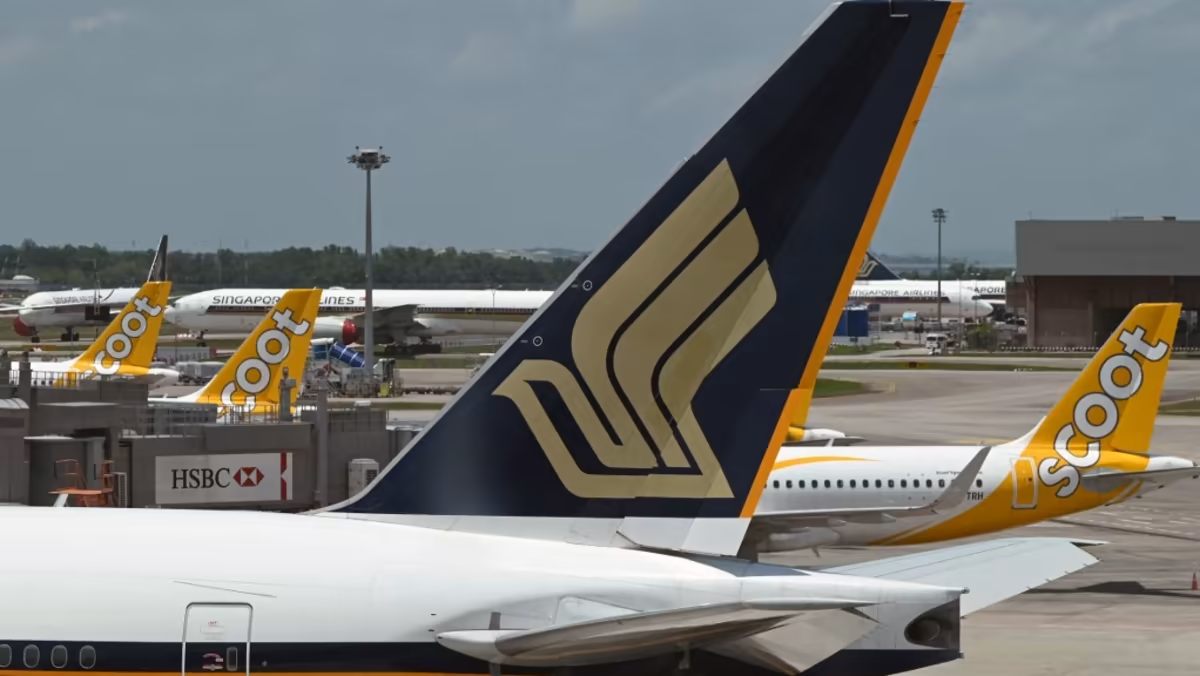
From 1 April 2025, Singapore Airlines and Scoot passengers will be prohibited from charging devices via power banks, or charging the power banks themselves inflight.
It’s important to reemphasise that this is a ban on power bank use, not possession. When flying with Singapore Airlines or Scoot:
- Power banks of up to 100Wh can be brought onboard
- Power banks of 100Wh to 160Wh can be brought onboard with approval
- Power banks of >160Wh (if such things even exist) are prohibited
| Rating | Cabin Baggage | Checked Baggage |
| ≤100Wh | Yes | No |
| >100Wh and ≤160Wh | Yes (approval required) |
No |
| >160Wh | No | No |
In response to passenger enquiries on Facebook regarding how approval should be sought, Singapore Airlines has instructed passengers to contact their local reservations office.
Now, if you look at the details on your power bank, you might not find Wh listed anywhere. Power banks usually market their capacity in mAh, which means some conversion is required.
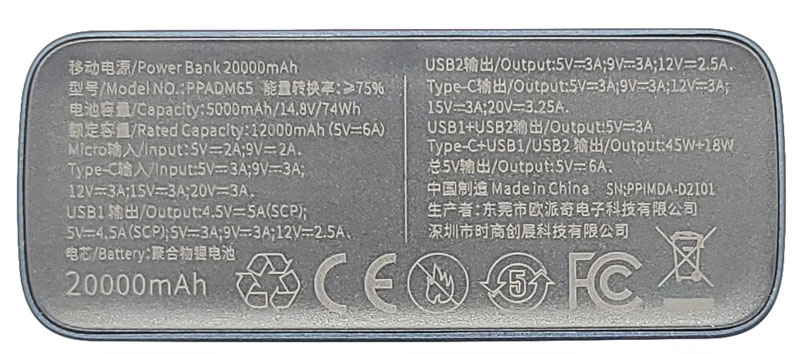
Wh can be converted into mAh by using the formula mAh = (Wh * 1000)/V, where V is the voltage in volts. For instance, 100Wh would be the equivalent of 27,000 mAh, based on 3.7V. You can also use this calculator if mathematically challenged.
Which aircraft have in-seat power?
Since inflight power bank use is restricted, the question then becomes: what alternative power sources are available to passengers?
The answer very much depends on whether you’re travelling with Singapore Airlines or Scoot.
Singapore Airlines
Singapore Airlines passengers travelling in Suites, First Class, Business Class or Premium Economy are each guaranteed a personal in-seat power outlet and USB-A port(s).
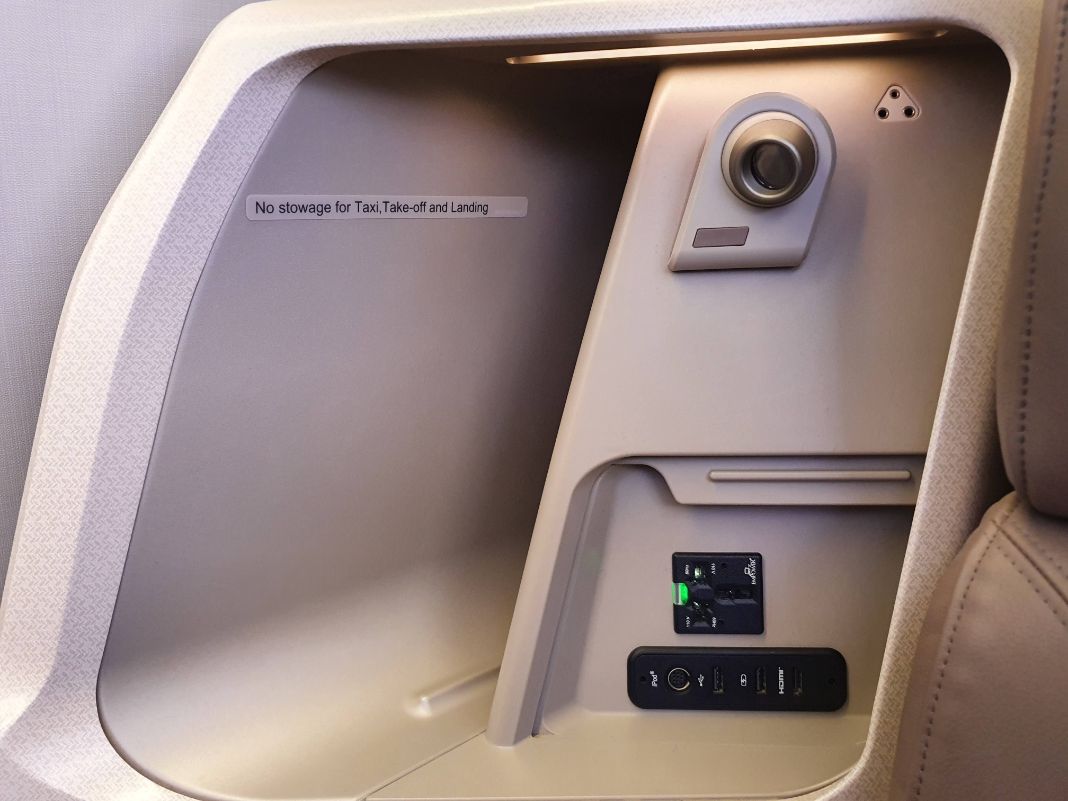
In Economy Class, however, that’s not the case.
| ✈️ Singapore Airlines Economy Class | ||
| A/C | Power Outlet | USB Ports |
| A350-900MH | 3 pax : 2 outlets | 1x Type-A |
| A350-900LH | 3 pax : 2 outlets | 2x Type-A^ |
| A380-800 | 3 pax : 2 outlets | 1x Type-A |
| B737-800 | None | None |
| B737-8 MAX | None | 1x Type-A |
| B777-300ER | 3 pax : 2 outlets | 2x Type-A^ |
| B787-10 | 3 pax : 2 outlets* | 1x Type-A |
| ^One outlet is for data transmission, the other for charging. I’m not sure whether the data transmission outlet also charges, and if so, at what speed | ||
If you’re flying on a widebody aircraft (A350-900MH/LH, A380-800, B777-300ER and B787-10, you will have at least 1x USB-A port for charging. However, you may need to share the power outlet with your seatmates, as the ratio is 3 passengers to 2 outlets (the bulkhead rows may have personal power outlets, as is the case on the B787-10).
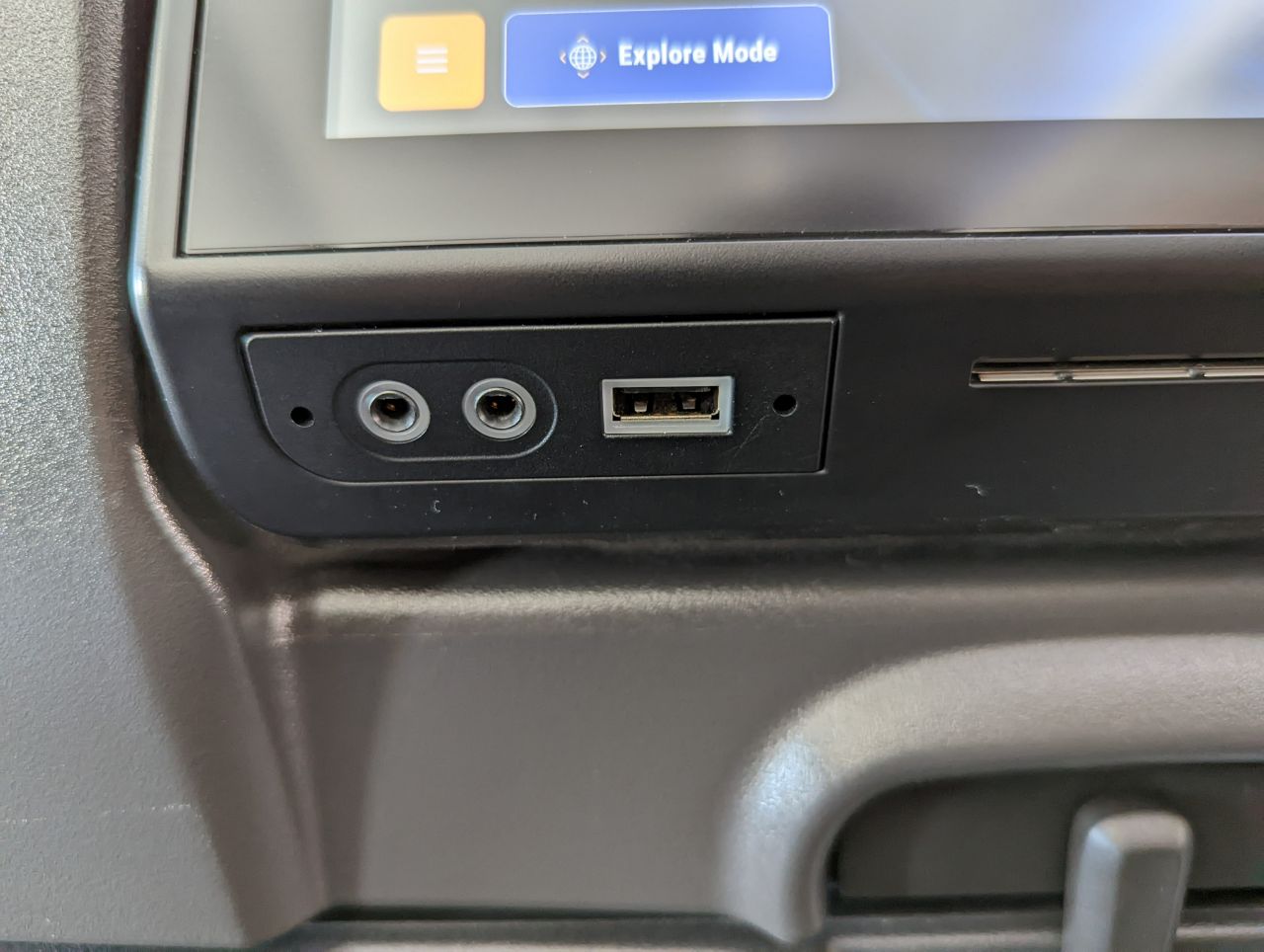
If you’re flying on a narrowbody aircraft (B737-800 or B737-8 MAX), no power outlet is available. Those flying the B737-8 MAX have 1x USB-A port beneath their screen, but those on the B737-800 have no in-seat power, period.
Fortunately, the B737-800s will be retired by October 2025, and only four such aircraft currently remain in the fleet. These are rostered on the following routes:
- Kathmandu (ends 25 Oct 2025)
- Kuala Lumpur (ends 30 Apr 2025)
- Penang (ends 25 Oct 2025)
- Phuket (ends 29 Mar 2025)
- Siem Reap (ends 29 Mar 2025)
With the notable exception of Kathmandu (~5 hours), the rest of the routes are short enough that the absence of in-seat power should hopefully not become an issue.
Scoot
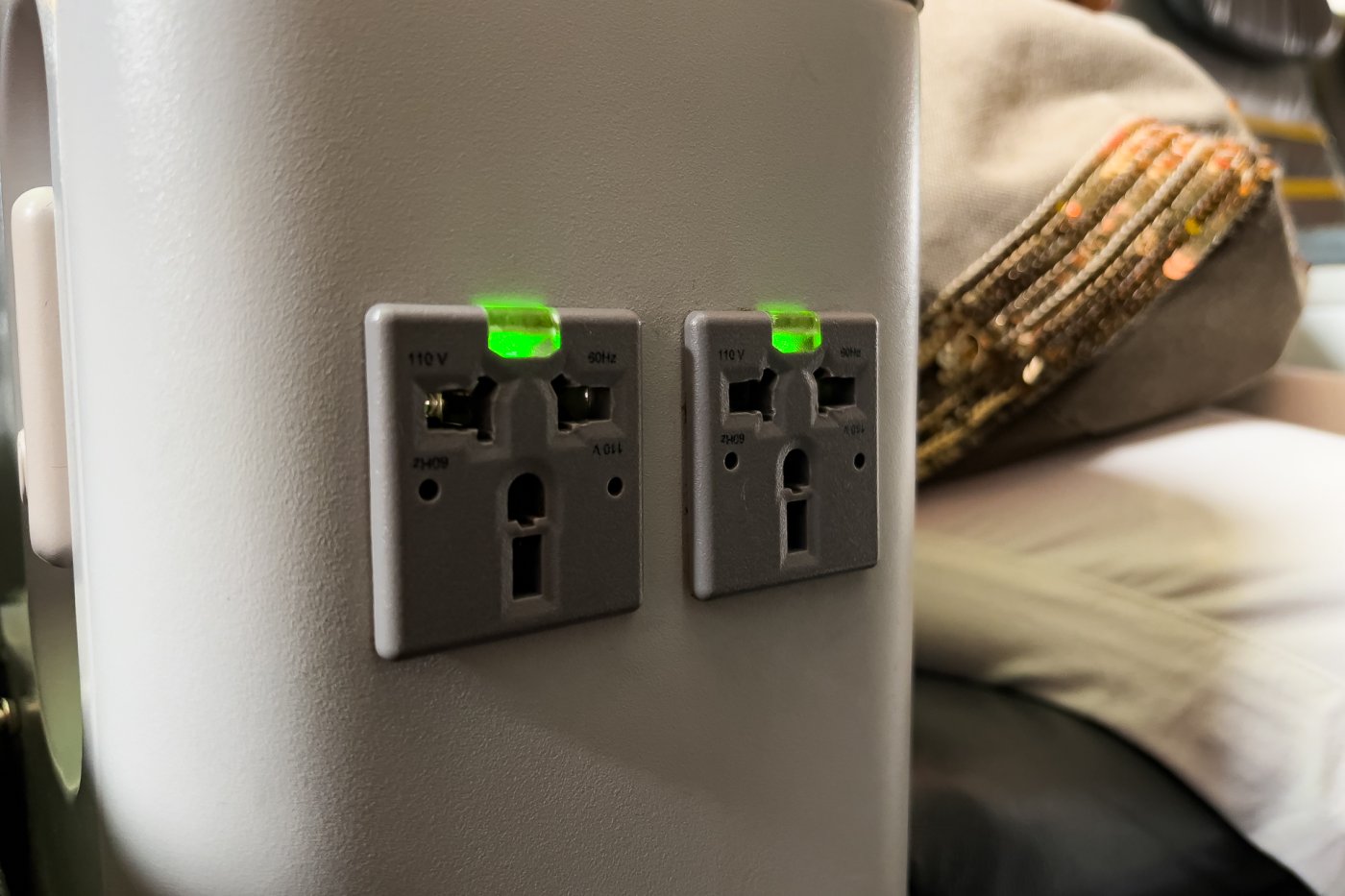
The in-seat power situation is very different with Scoot.
The only aircraft with power outlets are the Boeing 787-8 and Boeing 787-9. USB ports are not available on Scoot.
| ✈️ Scoot Fleet | ||
| A/C | Power Outlet | USB Ports |
| A320-200 | N/A | N/A |
| A320neo | N/A | N/A |
| A321neo | N/A | N/A |
| B787-8 | Yes | N/A |
| B787-9 | Yes | N/A |
| E190-E2 | N/A | N/A |
Power outlets are free for Scoot Plus passengers to use, but all other passengers will have to pay a fee that ranges from S$5 to S$11, depending on flight duration.
| Flight Duration | Price |
| Short-haul (<4 hours) | S$5 |
| Medium-haul (4-7 hours) | S$7 |
| Long-haul (7-11 hours) | S$9 |
| Extra long-haul (>11 hours) | S$11 |
Unless I’m mistaken, Scoot is the only airline in the world to charge for the use of in-seat power. While the technology to do this has been around for a while, other airlines have decided against it for fear of backlash, or simply because of the logistical issues involved (the time taken for cabin crew individually enable charging for various passengers could be better put to use selling higher-margin F&B and duty free).
I know, it’s very nickel and dimey— but hey, it’s Scoot.
Where is USB-C charging?
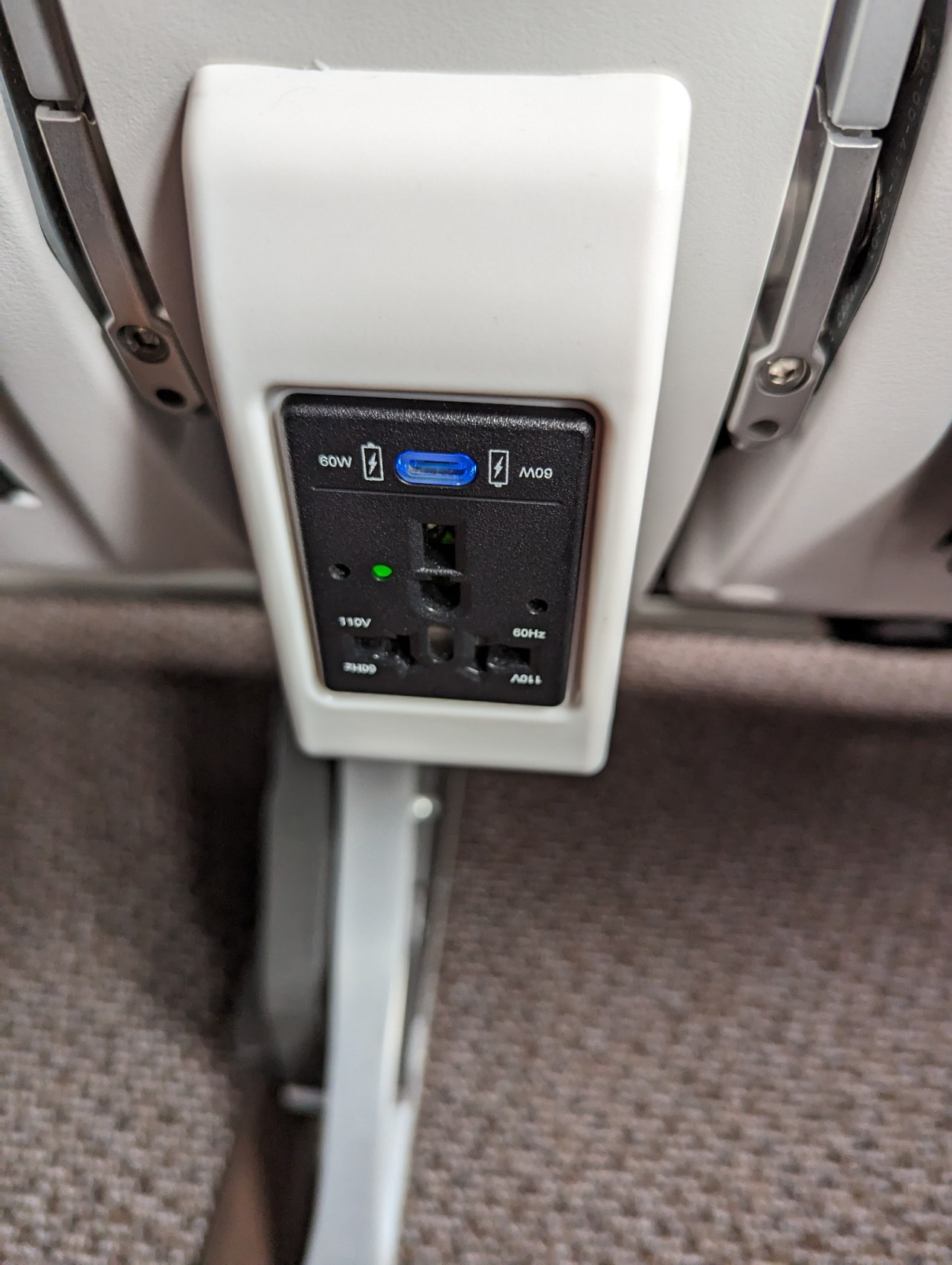
In my experience, onboard USB charging ports don’t always work. Fixing malfunctioning USB ports is generally very low on an airline’s list of priorities, and if you happen to draw the short straw, you might need to borrow your seatmate’s.
Moreover, Singapore Airlines only offers USB-A ports, and depending on utilisation, charging speeds can be very, very slow (I’ve had a case where my phone battery actually declined while plugged in!).
USB-C charging is currently not available on any Singapore Airlines aircraft. This will almost certainly feature on the Boeing 777-9, but with the delivery date now slipping till 2026 (and most likely 2027 for Singapore Airlines, at best), we’ll probably see USB-C charging debut on the refitted A350-900s in Q2 2026.
In the meantime, the best you can do is to bring a power adapter with USB-C ports, to enable faster charging.
Conclusion
Singapore Airlines and Scoot will restrict the inflight use of power banks from 1 April 2025, citing safety concerns.
Singapore Airlines passengers are generally well provided for when it comes to in-seat power, though Economy customers flying on narrowbody aircraft will either have to make do with just USB-A ports (B737-8 MAX), or nothing at all (B737-800).
It’s a very different story with low-cost subsidiary Scoot, where the majority of its fleet lacks in-seat power. Where in-seat power exists (B787-8/9), a fee of S$5 to S$11 is payable for all passengers except those in Scoot Plus. Because of this, I’m almost certain there will be passengers surreptitiously charging devices in their bags, which if anything presents an even greater risk of overheating.
What do you make of the ban on inflight power bank use?



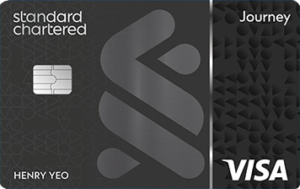
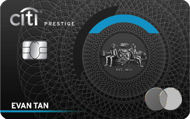


enforcement would be a nightmare and I pity the FAs. Like u mentioned sneak charging in the bag poses and even greater risk.
I am sure of this. 60-70% of the people will follow. 30% usually are going to test/challenge the system, bo chup and stubborn and naughty ones… lol
setting a rule is not just about enforcement, it is about liability. Airlines already said no, if something happens, airlines can make u liable for damages. One cant pretend to say “i dont know cant charge”
Before flight, they should play videos of power bank catching fire. And the korea plane on fire.
May be that will deter
Haha, news of sudden turbulent drop that sent passengers flying have yet to deter passengers from buckling up, even when seatbelts signs are on, and even when the aircraft is having turbulence.
This article has an error. Using a USB-C adapter will not increase charging speed. Charging speed is determined by the source, ie the power supply to the port by the plane.
using a USB-c cable connected to a power adapter plugged into the seat’s a/c port is going to charge faster than the seat’s usb-a port, that’s for sure.
Yes, but Simon has a point: Using a USB-A plugged into a power adapter plugged into the seat’s AC port might charge faster than a standard USB-C adapter (e.g. with my Xiaomi 120W USB-A charger plugged into an Emirates power socket, it charges with about 70W). But my point is a different one: Once SIA offers USB-C in-seat ports, they might still be quite slow, if SIA so chooses. For now, I found USB-C in-seat at least a bit more reliable though (e.g. on Malaysia Airlines narrow body eco). But that might also just be because the equipment is newer… Read more »
Based on the sample image of the powerbank capacity rating in the article, I notice there are 3 mAh values and several V values provided. Would you be able to advise which mAh and V values to use to calculate the Wh please?
On Scoot, the issue is that the crew is really busy (with security protocol, selling food/drinks/duty free etc.). So often they don’t have time to turn on the AC power socket even if you want to pay. It mirrors what Aaron wrote above: They probably can make more money, if they don’t turn on the socket and sell chips, chocolate or coffee instead to another passenger in the time it would take them to turn on the power. In addition, the tech for turning the sockets on/off seems to be as unreliable as USB-A ports on planes: often it just… Read more »